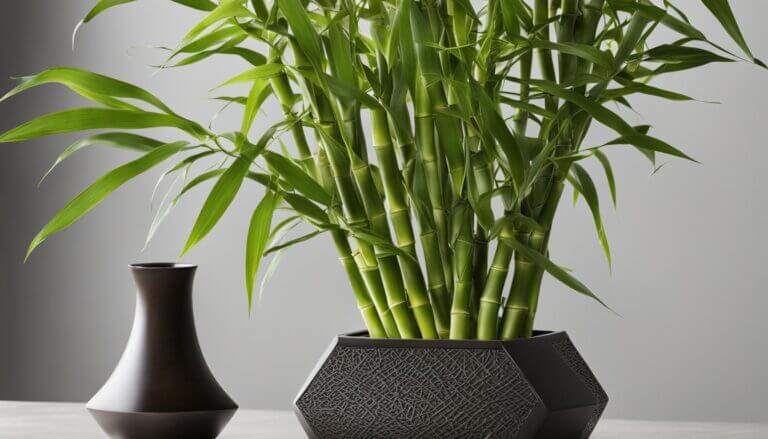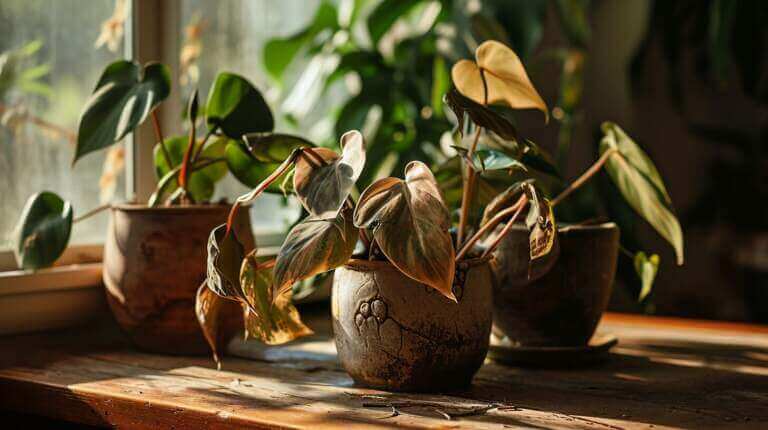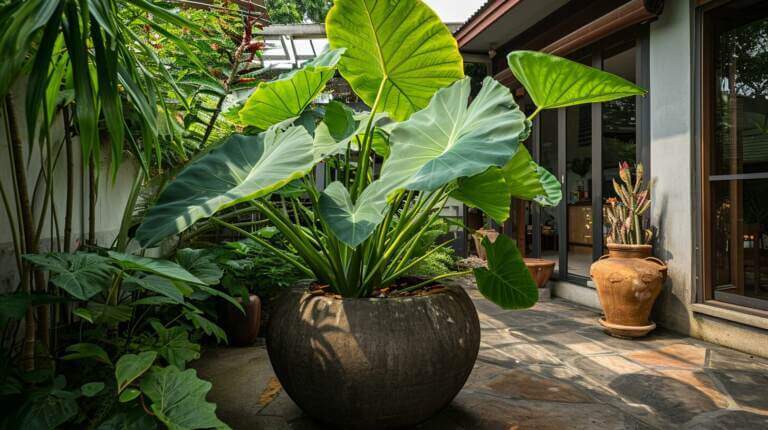Troubleshooting Issues with Parlor Palms: Brown Tips, Crispy Fronds, and More
As a plant enthusiast, I understand that parlor palms, also known as Chamaedorea elegans or Neanthe bella palms, are beloved indoor plants renowned for their low-maintenance nature and ability to thrive in low light conditions. However, even the most resilient plants can face challenges, and parlor palms are no exception. One of the most common issues that owners encounter are brown tips and crispy fronds, which can be concerning. To ensure the health and vitality of your parlor palm, it is crucial to troubleshoot these problems and provide the proper care.
Key Takeaways:
- Brown tips and crispy fronds are common issues faced by parlor palm owners.
- Potential causes of brown tips include underwatering, root rot, fertilizer burn, magnesium deficiency, fluoride toxicity, and low humidity.
- To address brown tips, ensure adequate watering, proper drainage, accurate measurement of fertilizer and water, soil flushing, magnesium supplementation, avoidance of fluoride toxicity, and increased humidity.
- Yellow leaves on parlor palms can be caused by incorrect watering, nutrient deficiency, and excessive sunlight.
- Solutions for yellow leaves involve proper watering, nutrient supplementation, and adjusting light conditions.
Understanding the Causes of Parlor Palm Brown Tips
Parlor palms, also known as Chamaedorea elegans or Neanthe bella palms, are beloved indoor plants known for their low-maintenance nature and ability to thrive in low light conditions. However, they can develop brown tips and crispy fronds, which are common issues faced by plant owners. To effectively troubleshoot these problems and provide appropriate care, it is important to understand the causes and solutions.
Several factors can contribute to parlor palm brown tips. Underwatering is a common culprit, often resulting from allowing the potting mix to go completely dry or not thoroughly soaking the potting mix when watering. On the other hand, overwatering and improper drainage can lead to root rot, which manifests as brown tips and can cause severe damage to the plant. Fertilizer burn is another potential cause, occurring when incorrect amounts are used or when the soil is not flushed periodically to remove built-up salts and minerals. Additionally, parlor palms can suffer from magnesium deficiency, as many fertilizers lack sufficient magnesium content. Another factor to consider is fluoride toxicity, as parlor palms are moderately sensitive to fluoride found in tap water.
Causes of Parlor Palm Brown Tips:
- Underwatering
- Root rot caused by overwatering and improper drainage
- Fertilizer burn from incorrect amounts or lack of soil flushing
- Magnesium deficiency in fertilizers
- Fluoride toxicity from tap water
- Low humidity
Understanding these causes is crucial in troubleshooting and effectively addressing the issue of parlor palm brown tips. By identifying the underlying factors contributing to the browning of the plant’s fronds, plant owners can take targeted measures to restore the plant’s health and maintain its vibrant appearance.
Solutions for Parlor Palm Brown Tips
When it comes to troubleshooting brown tips on parlor palms, implementing the right solutions is key to restoring their health and vitality. Here are some effective methods to address this common issue:
Watering Techniques
Proper watering is essential to prevent brown tips on parlor palms. It is important to thoroughly soak the potting mix when watering, ensuring that the water penetrates the roots and reaches all parts of the plant. However, be cautious not to overwater, as excessive moisture can lead to root rot. Allow the top inch of soil to dry out before watering again, as this helps prevent waterlogged conditions.
Proper Drainage
Ensuring proper drainage is crucial, as stagnant water can contribute to brown tips. Make sure that the pot has drainage holes to allow excess water to escape. Additionally, use well-draining potting mix to promote good airflow and prevent waterlogged soil conditions.
Measurement of Fertilizer and Water
Accurate measurement of fertilizer and water is essential to prevent over or under-fertilization, which can contribute to brown tips. Follow the instructions provided on the fertilizer package and use a measuring tool to ensure the correct amount. When watering, aim to provide enough water to thoroughly saturate the potting mix without causing water to pool in the saucer.
Flushing Soil
Periodically flushing the soil with plain water can help remove built-up fertilizer salts and minerals, which can contribute to brown tips. This process involves thoroughly drenching the soil, allowing the excess water to drain out completely. Flushing the soil once every few months can help maintain a healthy soil balance.
Magnesium Supplementation
Magnesium deficiency can also lead to brown tips on parlor palms. Supplementing the plant with magnesium through fertilizers such as Dyna-Gro Grow can help address this deficiency. Follow the instructions on the fertilizer package for application rates and frequency.
Avoiding Fluoride Toxicity
Parlor palms are moderately sensitive to fluoride, which can be found in tap water. To prevent fluoride toxicity and brown tips, use distilled or filtered water without fluoride for watering. Alternatively, allow tap water to sit overnight to allow the fluoride to dissipate before using it on your parlor palm. Additionally, maintaining proper soil pH can help reduce the impact of fluoride.
Increasing Humidity
Increase humidity levels around your parlor palm to prevent brown tips caused by dry air. You can mist the plant regularly, place a humidifier nearby, or even move the plant to a bathroom where moisture levels tend to be higher. These measures help recreate the plant’s natural habitat and prevent excessive moisture loss from the leaves.
| Problem | Solution |
|---|---|
| Brown tips due to underwatering | Thoroughly soak the potting mix when watering and ensure the top inch of soil dries out before watering again. |
| Brown tips due to overwatering and root rot | Ensure proper drainage by using a pot with drainage holes and well-draining potting mix. |
| Brown tips due to fertilizer burn | Measure fertilizers accurately and periodically flush the soil with plain water to remove built-up salts and minerals. |
| Brown tips due to magnesium deficiency | Supplement the plant with magnesium using fertilizers such as Dyna-Gro Grow. |
| Brown tips due to fluoride toxicity | Use distilled or filtered water without fluoride for watering and maintain proper soil pH. |
| Brown tips due to low humidity | Increase humidity levels through misting, using a humidifier, or placing the plant in a bathroom. |
Understanding Parlor Palm Yellow Leaves
Factual data suggests that yellowing leaves on parlor palms can occur due to several factors such as incorrect watering techniques, nutrient deficiency, or excessive sunlight exposure. By understanding these causes, you can effectively identify and address the issue to ensure the overall health of your parlor palm.
Incorrect Watering
One of the common causes of yellow leaves on parlor palms is incorrect watering. Overwatering can lead to root rot and yellowing leaves, while underwatering can result in dry and wilting leaves. It is important to establish a proper watering routine, allowing the top inch of soil to dry out between waterings. This ensures that the plant receives adequate moisture without being overwatered.
Nutrient Deficiency
Another cause of yellow leaves is nutrient deficiency. Parlor palms require essential nutrients such as nitrogen, manganese, and magnesium for healthy growth. Lack of these nutrients can lead to yellowing leaves. Consider using fertilizers enriched with these nutrients to supplement the plant’s diet and promote vibrant green foliage.
Excessive Sunlight
Exposing your parlor palm to excessive direct sunlight can also result in yellow leaves. These plants prefer bright but indirect light, so it is important to find a suitable location that provides enough light without subjecting the plant to intense sunlight. Adjusting the light conditions by providing shade or placing the plant a few feet away from direct sunlight can help prevent yellowing.
| Cause | Symptoms |
|---|---|
| Incorrect Watering | Wilting or dry leaves |
| Nutrient Deficiency | Yellowing leaves |
| Excessive Sunlight | Yellow or burnt leaves |
“Proper watering, adequate nutrient supplementation, and controlling sunlight exposure are key factors in preventing yellow leaves on parlor palms.”
Solutions for Parlor Palm Yellow Leaves
If you’ve noticed yellow leaves on your parlor palm, don’t worry! There are several solutions you can implement to address this issue and promote healthy growth. Here are some effective strategies:
- Proper watering: Ensure that you’re watering your parlor palm correctly. Allow the top inch of soil to dry out before watering again. Overwatering can lead to root rot and yellowing leaves, while underwatering can result in dry, wilting leaves.
- Nutrient supplementation: Yellow leaves may indicate a nutrient deficiency in your parlor palm. Consider using a balanced liquid fertilizer enriched with nitrogen, manganese, and magnesium. This will provide essential nutrients and support healthy foliage.
- Adjusting light conditions: Parlor palms prefer bright, indirect light. Excessive exposure to direct sunlight can cause yellowing leaves. Make sure to place your plant in a location where it receives adequate but gentle light.
Essential Parlor Palm Care Tips
Proper care techniques play a crucial role in maintaining the health and beauty of parlor palms. Here are some essential care tips to ensure your parlor palm thrives:
Light Conditions
Parlor palms prefer bright but indirect light. Avoid placing them in direct sunlight, as it can scorch the leaves. Choose a location near a window with filtered light or away from windows with intense sunlight. If necessary, you can supplement the light with fluorescent or grow lights.
Watering
Proper watering is essential for parlor palms. It’s best to water thoroughly, allowing the top inch of soil to dry out between waterings. Overwatering can lead to root rot, while underwatering can cause dry and wilting leaves. Always check the soil’s moisture level before watering.
Humidity
Parlor palms thrive in high humidity environments, similar to their natural habitat. Increase humidity levels by regularly misting the leaves, placing a humidifier nearby, or grouping plants together to create a microclimate. A bathroom or kitchen with naturally higher humidity can also be an ideal location for your parlor palm.
Pruning
Occasional pruning helps keep your parlor palm looking neat and healthy. Remove any brown or yellow leaves by cutting them off as close to the base as possible. Avoid cutting into the green part of the fronds, as this can harm the plant.
Fertilizing
Parlor palms benefit from regular fertilization to provide essential nutrients. Use a balanced liquid fertilizer once a month during the growing season, following the package instructions for the correct dosage. This will help promote healthy growth and vibrant green leaves.
| Care Tips | Summary |
|---|---|
| Light Conditions | Provide bright but indirect light, avoiding direct sunlight. |
| Watering | Water thoroughly, allowing the top inch of soil to dry out between waterings. |
| Humidity | Increase humidity levels through misting, using a humidifier, or placing the plant in a humid environment. |
| Pruning | Remove brown or yellow leaves by cutting them off at the base. |
| Fertilizing | Use a balanced liquid fertilizer once a month during the growing season. |
Propagation and Repotting of Parlor Palms
When it comes to expanding your collection of parlor palms or ensuring the continued vitality of your existing plants, propagation and repotting are two essential practices to consider. By understanding the techniques involved and following proper procedures, you can successfully propagate parlor palms and provide them with the appropriate conditions for growth.
Propagation of Parlor Palms
Propagating parlor palms can be done through a technique called division. This involves carefully separating the plant into smaller sections, ensuring that each section has its own set of roots. To begin, gently remove the plant from its pot and examine the root ball. Look for natural divisions or separate the plant into sections with a clean, sharp knife or shears. Each section should have a good amount of roots attached. Once divided, plant each section in a separate pot filled with fresh potting mix.
Repotting Parlor Palms
Repotting is necessary when a parlor palm has outgrown its current pot or becomes root-bound. Choose a pot that is slightly larger than the current one, with proper drainage holes to prevent overwatering. Gently remove the plant from its pot, being careful not to damage the roots. Loosen the root ball slightly to encourage new growth. Place the plant in the new pot and fill it with fresh potting mix, ensuring that the plant is at the same depth as before. Firmly press the soil around the roots and water thoroughly.
Both propagation and repotting should be done during the spring or summer months when the plant is actively growing. Providing the newly propagated or repotted parlor palm with proper care, including adequate watering, light conditions, and humidity, will help it establish and thrive in its new environment.
| Propagation Techniques | Repotting Tips |
|---|---|
| Division: Separate the plant into smaller sections with their own roots. | Choose a slightly larger pot with proper drainage holes. |
| Ensure each section has a good amount of roots. | Gently remove the plant, avoiding root damage. |
| Plant each section in a separate pot with fresh potting mix. | Loosen the root ball and place the plant at the same depth in the new pot. |
| Propagate during spring or summer when the plant is actively growing. | Water thoroughly after repotting. |
Common Issues in Parlor Palm Care: Pruning and Troubleshooting
When it comes to caring for your beloved parlor palm, it’s important to be prepared for common issues that may arise along the way. Pruning is an essential task to keep your plant looking its best. Occasional pruning helps to remove brown and yellow leaves, promoting new growth and maintaining the overall aesthetics of your parlor palm. Remember to trim only the dead or damaged fronds, avoiding cutting into the green part of the plant. This will ensure that your parlor palm continues to thrive.
Troubleshooting is another crucial aspect of caring for your parlor palm. One common issue you may encounter is brown spots on the leaves. This can be caused by excessive sunlight exposure. If your plant is receiving too much direct sunlight, consider moving it to a spot with bright, indirect light. Additionally, dry leaves can be a result of inadequate watering. Ensure that you are providing enough water, allowing the top inch of the soil to dry out between waterings.
Yellow leaves are another common concern for parlor palm owners. This can be caused by various factors, including improper watering or nutrient deficiencies. To address this issue, make sure you are following the proper watering techniques and allowing the soil to slightly dry out between waterings. Additionally, consider using a balanced liquid fertilizer to provide essential nutrients to your plant. These steps will help prevent yellowing and promote vibrant green leaves.
FAQ
What causes brown tips on parlor palms?
Brown tips on parlor palms can be caused by underwatering, root rot, fertilizer burn, magnesium deficiency, fluoride toxicity, or low humidity.
How can I solve the issue of brown tips on my parlor palm?
To solve the issue of brown tips on parlor palms, it is important to water the plant adequately, provide proper drainage, measure fertilizer and water accurately, flush the soil periodically, supplement magnesium, avoid fluoride toxicity, and increase humidity levels.
Why are my parlor palm leaves turning yellow?
Parlor palm leaves can turn yellow due to incorrect watering techniques, nutrient deficiency, or excessive sunlight exposure.
How can I prevent yellow leaves on my parlor palm?
To prevent yellow leaves on parlor palms, it is important to follow proper watering techniques, address nutrient deficiencies with appropriate fertilizers, and adjust light conditions to provide bright, indirect light.
What are some essential care tips for parlor palms?
Essential care tips for parlor palms include providing adequate light conditions, watering properly, increasing humidity levels, occasional pruning, and fertilizing monthly with a balanced liquid fertilizer.
How can I propagate and repot my parlor palm?
Parlor palms can be propagated through division and should be repotted when they outgrow their current pot. Use a slightly bigger pot with proper drainage and fresh potting mix.
What are some common issues in parlor palm care?
Common issues in parlor palm care include pruning to remove brown and yellow leaves, troubleshooting problems like brown spots caused by excessive sunlight, dry leaves, and yellow leaves.







